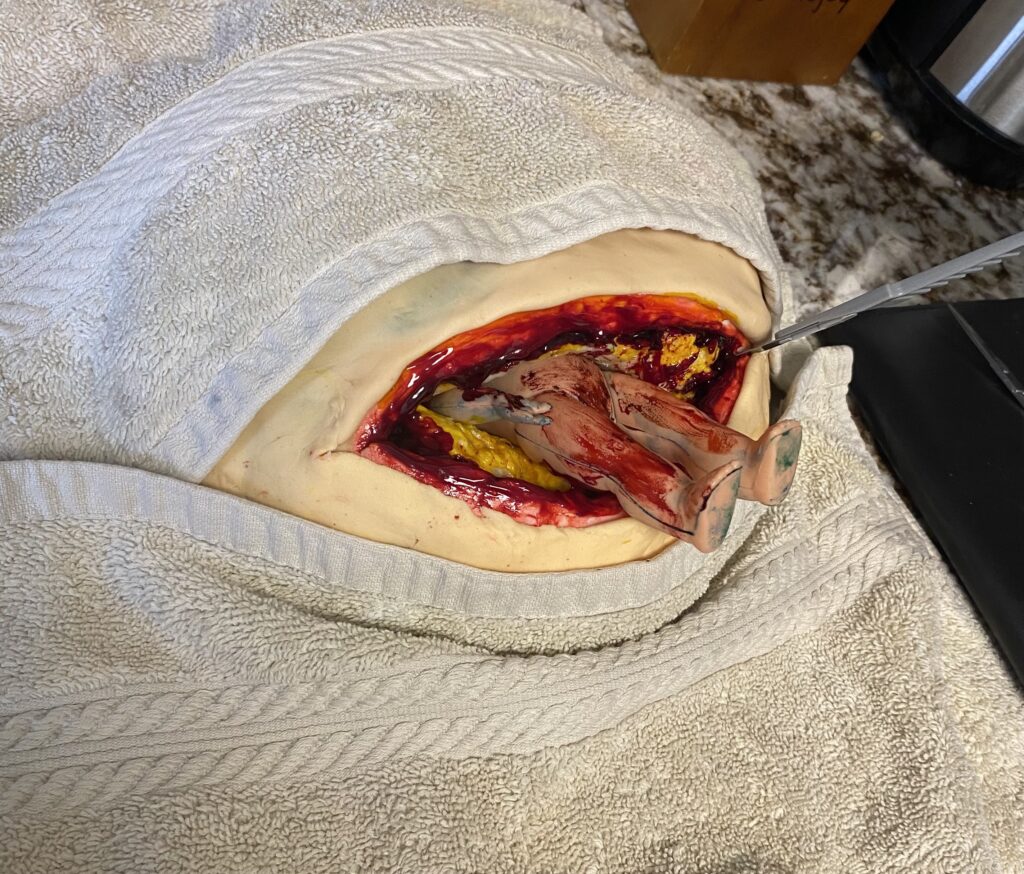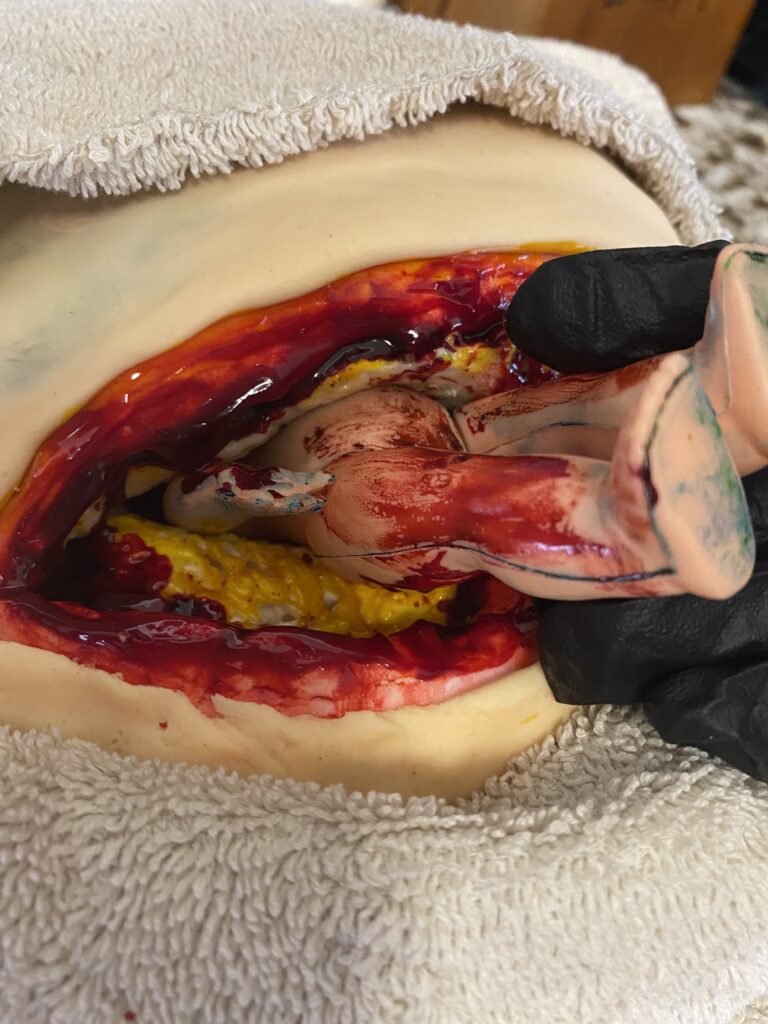
The objective I chose for this STEAM project is “Explain common disorders during pregnancy and their cause.” I wanted to learn more about cesarean sections and why people get these surgeries. We talked a bit about pregnancy but nothing about cesarean sections, also known as c-sections. As I researched c-sections and why they are done, I come across that 32% of Americans have had a cesarean section ever since 2020, which was 2 years ago so I have to keep that in mind as well. A cesarean section is a surgical delivery when a vaginal delivery poses a risk for the mother and/or the baby. A cesarean section procedure is where you are put under regional anesthesia through an epidural or spinal anesthetic in the lower back. Once the mother is able to feel no pain, the doctor cuts above or below the pubic hair line either vertical or horizontal (more commonly horizontal due to vertical being more of a quicker needed delivery if it is an emergency.)
C-sections do come with benefits and a lot of risks. Some benefits are reduced injury to the vagina, reduced risk of loss of bladder control, reduced/ no pain during birth, and reduced risk of pelvic organ prolapse. While the risks are urine and womb infection, bleeding that could lead to transfusion, hysterectomy, blood clots, or even problems with future pregnancies. Some possible risks to the baby could be accidentally cut into or breathing problems. Some known facts are that c-sections take longer to recover from and up to a 4-day stay at the hospital after.
Once I knew more about cesarean sections I wanted to know, “why?” So, I picked the objective of common disorders during pregnancy and their causes and began researching more in-depth. I found many reasons as to why they might have a c-section due to a disorder during the pregnancy, but even more on why they have one in general. C-sections could happen from the baby being at the wrong angle, a placental abruption, labor dystocia, or even placenta previa. That is just to name a very few amounts of reasons why. I chose to research further into placental abruptions and placenta previa.
First of all, what are placenta previa and placental abruptions? Placenta previa is when the placenta covers the opening of the mother’s cervix. Some main risk factors are previous delivery, an age that is older than 35, or even a history of previous surgeries. A few symptoms are bright red vaginal bleeding with no pain mainly after the second half of pregnancy. A severe case of placenta previa may result in a preterm c-section (cesarean section). Placental abruption is where the placenta detaches from the inner wall of the womb. This may happen from trauma or injury to the abdomen, an auto accident, fall, abuse, or a rapid loss of amniotic fluid. These are considered “rare” complications, but these are common complications to happen even though disorders/ complications during pregnancy are rare themselves.
After researching all about these disorders/ complications and more, I realized even more about how much women go through during pregnancy, some women are luckier than others but a lot of complications happen without the mother even doing anything wrong. These complications are all random and thinking about how much pain some of these women go through for their children is amazing. Women’s bodies are capable of so much more than we realize, and having to recover from a surgery where they are cut open to the point of their uterus being compromised to infection is unimaginable.

Resources
https://www.mayoclinic.org/tests-procedures/c-section/about/pac-20393655
https://www.verywellfamily.com/cesarean-section-photos-step-by-step-2758512
https://www.mayoclinic.org/diseases-conditions/placenta-previa/symptoms-causes/syc-20352768
https://www.mayoclinic.org/diseases-conditions/placental-abruption/symptoms-causes/syc-20376458

Taylor discussed cesarean sections in her STEAM project. She went on to reveal how and why women choose cesareans, why they are forced into c-sections and what the risks versus benefits are.
Cesareans are an alternate birthing method to traditional vaginal birth. They are conducted by providing the mother with spinal anesthesia into the lumbar spine or regional anesthesia via epidural, in order to provide numbness and loss of feeling to below the mother’s waist. A surgical incision is then made horizontally, along the abdomen and uterus at the pubic hairline in order to deliver the baby safely.
From Taylor’s research it was concluded that there are both risks and benefits to a cesarean section and one does not outweigh the other, especially on a needed or emergent basis. Benefits to a c-section included reduced vaginal tearing, decreased incontinence, and the advantage of a more comfortable birth. However, the risks should not be taken lightly as they include blood loss, dyspnea, thrombosis, or sepsis. These risks can also be life threatening and ultimately end in loss of the mother or even the baby.
She also discussed complications that can lead to a mandatory c-section like placental abruption and placenta previa. Both of these involve the placenta and prevent vaginal birth as an option. The baby being incorrectly positioned for traditional birth can also cause birth by c-section.
I was able to gain a lot of insight from Taylor’s research on cesarean sections. She covered a lot of important details that are vital to the decision-making process if having to choose between c-section and vaginal birth. In order to properly formulate a decision, I believe the same research would need to be conducted on vaginal birth. As Taylor mentioned, it is truly remarkable what women and their bodies are able to do.